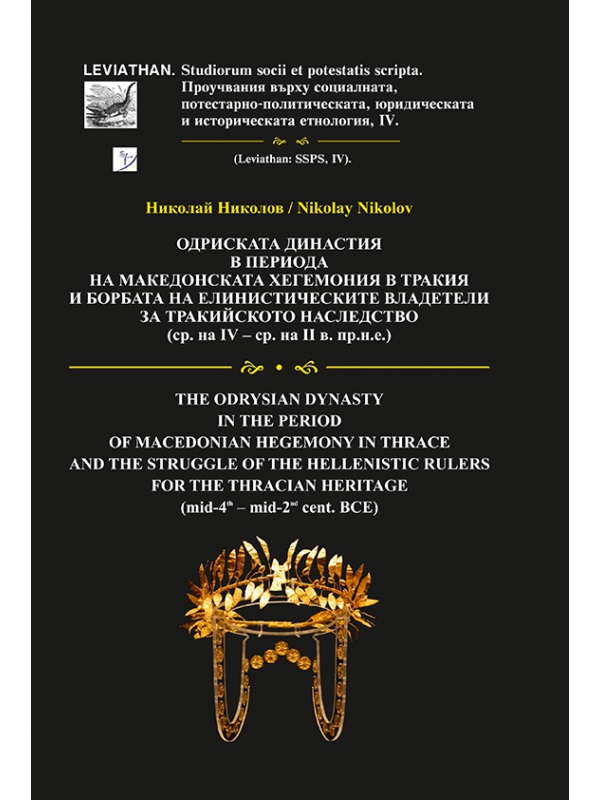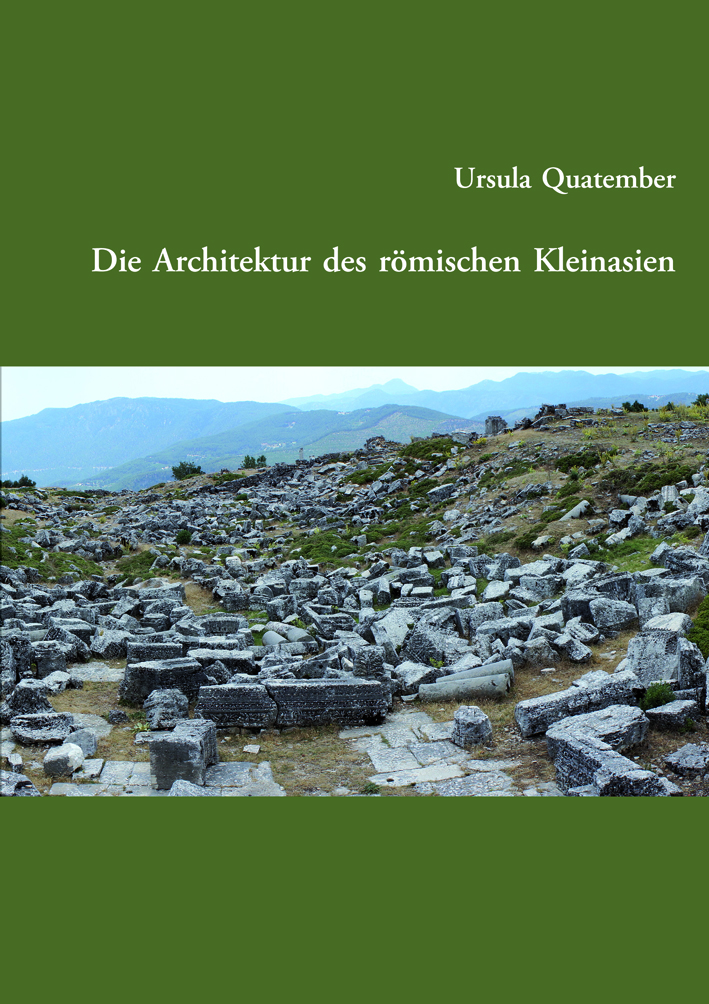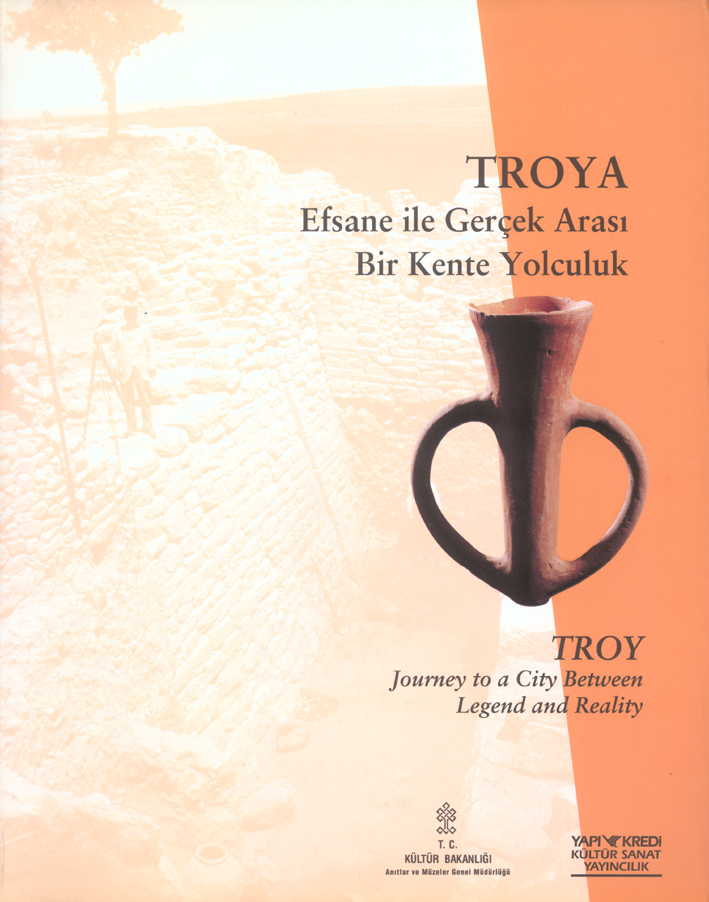Produkte filtern

Philia. International Journal of Ancient Mediterranean Studies. 11, 2025Wien 2025ISSN 2149-505XISBN 978-3-85161-332-2240 S./pp., zahlr. S/W-Abb./num. b/w-figs., 29,7 x 21 cm; kartoniert / hardcover

Nikolay Nikolov,The Odrysian Dynasty in the Period of Macedonian Hegemony in Thrace and the Struggle of the Hellenistic Rulers for the Thracian Heritage (mid-4th – mid-2nd cent. BCE) / Одриската династия в периода на македонската хегемония в Тракия и борбата на елинистическите владетели за тракийското наследство(LEVIATHAN. Studiorum socii et potestatis scripta. IV)Sofia 2025ISBN 978-619-7602-82-1448 S./pp., zahlr. S/W-Abb./num. b/w-figs., 28,5 x 20 cm; kartoniert/hardcoverbulgarisch mit englischer Zusammenfassung /bulgarian with english summaryThe object of the study is the Odrysian dynasty, and the subject is the processes that took place in it (including its historical development) in the period from the middle of the 4th to the middle of the 2nd century BCE. The main focus is placed on the state and development of the dynastic house of the Odrysians in the period of the Macedonian hegemony in Thrace and the subsequent era of aspirations toward the Thracian lands by the Hellenistic states – an era that ended with the beginning of the establishment of the military-political presence of the Roman Republic over the territory of the Balkan Peninsula. Table of contents Stefan YORDANOV. THE TERES’ DYNASTY IN DEFENSE OF THE POLITICAL INDEPENDENCE OF ITS DOMAINS. A NEW INVESTIGATION ON THE POLITICAL HISTORY OF ANCIENT THRACE LIST OF ABBREVIATIONS LIST OF ILLUSTRATIONS INTRODUCTION AIM, OBJECTIVES AND FRAMEWORK OF THE RESEARCH METHODOLOGY CHAPTER I. HISTORICAL SOURCES AND HISTORIOGRAPHY I. 1. HISTORICAL SOURCES I. 2. HISTORIOGRAPHY CHAPTER II. THE ODRYSIAN DYNASTY – POTESTARY-POLITICAL TRADITIONS II. 1. A THEORETICAL ANALYSIS OF THE PROCESS OF GENESIS OF THE RULER’S INSTITUTION II. 1. 1. The King-Priest – a Rudimentary Type of “Power” II. 1. 2. The Role of the Sex-Age Stratification in the Genesis of the Ruler’s Institution – Old vs. Young, or Peacetime Chiefs vs. Wartime Chiefs II. 1. 3. Relics of the Traditional System of the Sex-Age Organization in Antiquity and Ancient Thrace II. 2. POWER AND SUCCESSION – THE ODRYSIAN FRATRIARCHAL-PARADYNASTIC SYSTEM OF GOVERNMENT II. 2. 1. Principle of Succession II. 2. 2. Nature of Power and Separatist Tendencies II. 3. A GENERAL PRESENTATION OF THE DEVELOPMENT OF THE “EARLY” ODRYSIAN STATE AS A PARADIGM OF THE FRATRIARCHAL-PARADYNASTIC SYSTEM OF GOVERNMENT II. 3. 1. The Paradynastic Institution II. 3. 2. The Reign of Kotys I and the Uprisings of Adamas/Adamantus and Milthocytes – an Episodes from the Fratriarchal Struggles among the Odrysians II. 3. 3. The Partition of the Odrysian State – a Model of Formation of “Subsidiary” Odrysian State Formations CHAPTER III. THE MACEDONIAN HEGEMONY IN THRACE (356–323 BCE) III. 1. STAGES OF MILITARY-POLITICAL ESTABLISHMENT OF THE MACEDONIAN HEGEMONY OVER THE LANDS OF THE DIVIDED ODRYSIAN STATE (356–341 BCE) III. 1. 1. Territorial Core of the Odrysians and Geographical Dimensions of their Military-Political Influence III. 1. 2. Between Ketriporis and Amatocos – Initial Steps of Philip II in Thrace (356–352 BCE) III. 1. 3. The First Campaign of Philip II against Kersebleptes – Knowing the Enemy (352/351 BCE) III. 1. 4. The Second Campaign of Philip II againt Kersebleptes and the Peace of Philocrates – the Forerunners of the Macedonian Hegemony in Thrace (346 BCE) III. 1. 5. The Third Campaign of Philip II against Kersebleptes (342/341 BCE) – the Submission of Thrace (?) III. 2. CHARACTERISTICS OF THE MACEDONIAN HEGEMONY ACCORDING TO THE WRITTEN SOURCES ON THE CONQUESTS OF PHILIP II AND ALEXANDER III III. 2. 1. Main Patterns in the Policy of Conquest of Philip II – a Paradigm of Synthesis between the Macedonian’s Hegemony Ambitions and the Greeks’s Panhellenistic Dreams III. 2. 2. Main Patterns in the Policy of Conquest of Alexander III – Continuity and Evolution of the Philip’s Legacy III. 3. THE ODRYSIAN DYNASTY AND THE MACEDONIAN HEGEMONY IN THRACE (340–323 BCE) III. 3. 1. Presumed Odrysian Dynastic Centres after 341 BCE III. 3. 2. The Policy of Alexander III towards Thrace CHAPTER IV. THE STRUGGLE FOR THE THRACIAN HERITAGE (323–146 BCE) IV. 1. FROM PARADYNASTY TO DYNASTY – THE “SUBSIDIARY” ODRYSIAN AND POST-ODRYSIAN STATE FORMATIONS FROM THE END OF 4th TO THE END OF 3rd CENTURY BCE IV. 1. 1. Seuthes (III) and the Seuthopolian Dynasty IV. 1. 2. Spartokos, Skostokos (?) and the Dynastic House in Kabyle IV. 1. 3. Dromichaetes – the “Odrysian” Ruler of the Getae IV. 1. 4. Other Odrysian and post-Odrysian Dynastic Branches – Kotys (son of Raizdos), Kotys (father of Rhaskuporis), Sadala IV. 2. THRACE, THE ODRYSIANS AND LYSIMACHUS – THE DECLINE OF THE HEGEMONY OVER THRACE (323–281 BCE) IV. 2. 1. Lysimachus and the End of the Argeads (323–305/304 BCE) IV. 2. 2. Lysimachus the Basileus (305/304–281 BCE) – an Attempt to Establish a New Hegemony in Thrace (?) IV. 3. THE ASPIRATIONS FOR THE LYSIMACHUS’ LEGACY – THE “HELLENISTIC HEGEMONY” IN THRACE (281–221 BCE) IV. 3. 1. The Antigonid Dynasty – New Macedonian Ambitions towards Thrace IV. 3. 2. The Seleucid Dynasty – the Thracian Campaign of Antiochus II Teos IV. 3. 3. The Ptolemaic Dynasty – the Odrysian Diaspora in Egypt IV. 4. ROME AND THE ABOLITION OF THE HELLENISTIC STATUS QUO IN THRACE (221–146 BCE) IV. 4. 1. The Roman Republic and the Hellenistic Monarchies (221–188 BCE) – the Roman Dictates on Philip V and Antiochus III IV. 4. 2. Trends in the Expansion of the Roman Republic from the end of the 3rd and the beginning of the 2nd century BCE IV. 4. 3. Thrace on the Verge of Two Eras (188–146 BCE) – the Odrysian Dynastic Line of Seuthes, Kotys and Teres CONCLUSION APPENDICES I. THE “LATE” ODRYSIAN RULERS: HISTORICAL FIGURES OR HISTORIOGRAPHICAL MYTH II. TEREUS = TERES (?), OR BETWEEN MYTHOLOGY AND HISTORY – DID THE ODRYSIAN LEGENDARY GENEALOGY EXIST? III. RESPONSES TO REVIEWERS’ COMMENTS SUMMARY IN ENGLISH BIBLIOGRAPHY

Philia. International Journal of Ancient Mediterranean Studies. 10, 2024Wien 2024ISSN 2149-505XISBN 978-3-85161-319-3262 S./pp., zahlr. S/W-Abb./num. b/w-figs., 29,7 x 21 cm; kartoniert / hardcover

Lyubava Konova, Red-figure pottery from the necropolis of Apollonia Pontica (Sozopol) from the collection of the National Museum of History / Червенофигурна керамика от некропола на Аполония Понтика (Созопол) от фонда на Националния исторически музейVeliko Tarnovo 2024ISBN 978-619-00-1808-7472 S./pp., zahlr. Farb-Abb. / num. colour figs., 30 x 22 cm; kartoniert/hardcoverbulgarisch mit englischer Zusammenfassungbulgarian with a summary in english The monograph examines 103 painted vessels discovered during the excavations of the necropolis of ancient Apollonia Pontica in the 1990s. The ceramic forms and images are examined in their archaeological and cultural-historical context. Created in classical Athens in the 5th-4th centuries BC, pictorial narratives on vessels played the role of one of the most influential media in the dissemination of the values of Athenian society. At the same time, they clearly capture the identity of the multicultural community that was formed on the territory of the Pontic city as a result of contacts with various centres in the Mediterranean world, with the inhabitants of Inner Thrace and with the powerful Thracian kingdoms in the area. The edition contains 233 illustrations and 10 tables with data on the context of the objects, the composition of the clay and statistical information.

Ursula Quatember,Die Architektur des römischen Kleinasien(Veröffentlichungen des Instituts für Antike der Karl-Franzens-Universität Graz 19)Wien 2024ISBN 978-3-85161-312-4288 S./pp., 149 Taf. mit zahlreichen Farb- und S/W-Abb. / 149 pls. with num. colour and b/w-figs., 29,7 x 21 cm; kartoniert/hardcover

Naser Ferri, Gjetjet e reja epigrafike dhe numizmatike të zbuluara dhe të publikuara në Kosovë mes viteve 1980 dhe 2020 (= Novitates epigraphicae et numismaticae quae inter annos MCMLXXX et MMXX in Kosovo repertae et editae sunt / New epigraphic and numismatic finds discovered and published in Kosovo between the years 1980 and 2020)Prishtinё 2022ISBN 978-9951-24-164-9422 S./pp., zahlr. S/W-Abb./num. b/w-figs., 24 x 17 cm; broschiert/softcover albanisch mit Zusammenfassung in englischer Sprache / albanian with summary in english

Plamen Subev, Late Roman Fortress “Kovachevsko Kale” and the Bulgarian Lands (4th-6th c. AD). Volume I / Късноримският кастел „Ковачевско кале“ и българските земи през IV-VI век. Том I (Proceedings of a conference “Late Roman Fortification in Bulgarian Lands”, 3—4 June, 2016)Veliko Tarnovo 2017ISBN 978-619-00-0629-9300 S./pp., zahlr. S/W-Abb. / num. b/w-figs., 24 x 17 cm; broschiert/paperbackbulgarisch mit Zusammenfassungen in englischbulgarian with summaries in english

Plamen Subev, Late Roman Fortress “Kovachevsko Kale” and the Bulgarian Lands (4th-6th c. AD). Volume III / Късноримският кастел „Ковачевско кале“ и българските земи през IV-VI век. Том IIIVarna 2023ISBN 978-619-258-029-2336 S./pp., zahlr. Farb- und S/W-Abb. / num. colour and b/w-figs., 24 x 17 cm; broschiert/paperbackbulgarisch mit Zusammenfassungen in englischbulgarian with summaries in english

Ivan Hristov, Peninsula/Island of St. Thomas: History and archaeology of the Black Sea Islands / Полуостров/Остров Свети Тома. История и археология на черноморските островиVeliko Tarnovo 2021ISBN 978-619-00-1407-2336 S./pp., zahlr. S/W-Abb. / num. b/w-figs., 24 x 17 cm; broschiert/paperbackzweisprachig englisch - bulgarisch bilingual english - bulgarian The book focuses on the ancient history and archaeology of the islands of the Western Black Sea coast: St. Thomas, St. Ivan, Sv. Peter, St. Kirik and Julita, St. Anastasia and Levka. The topic of the book fits into the issue of the so-called Island Archeology. The proposed monograph is a pioneering one – this is the first summarizing academic work on island archeology for the Western Black Sea coast.

Lyudmil Vagalinski, Heraclea Sintica. History through ArchaeologyХераклея Синтика. История чрез археология(Archaeologia Bulgarica. Supplement 4)Sofia 2023ISBN 978-619-92330-1-6 (Band/vol. 1: Text/text) ISBN 978-619-92330-3-0 (Band/vol. 2: Abbildungen/figures) 2 Bände/volumes:Band/vol. 1: 124 S./pp., 28 x 20 cm; kartoniert/hardcoverBand/vol. 2: 332 S./pp., 28 x 20 cm; kartoniert/hardcoverBulgarisch mit ausführlicher englischer Zusammenfassung / Bulgarian with an extended summary in English

Devrim Çaliş-Sazcı,Troya. Efsane ile Gerçek Arası Bir Kente Yolculuk –Troy. Journey to a City Between Legend and RealityIstanbul 2002 ISBN 978-975-08-0490-8Türkisch - Englisch231 S., zahlr. Farb- und S/W-Abb., 29 x 23 cm; broschiert
